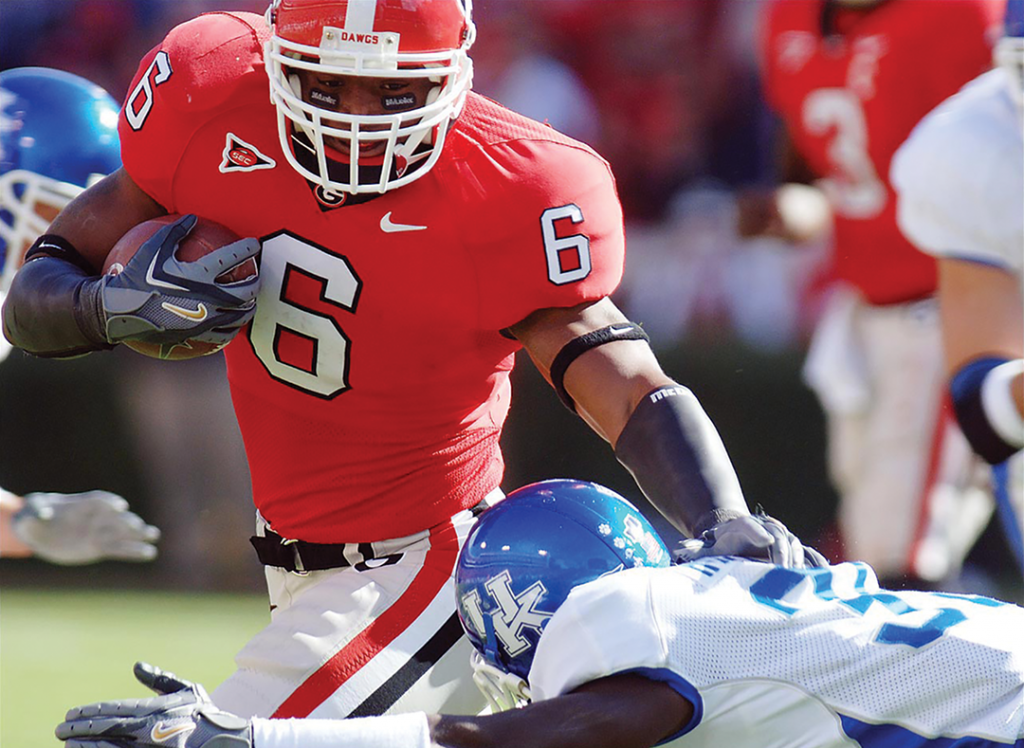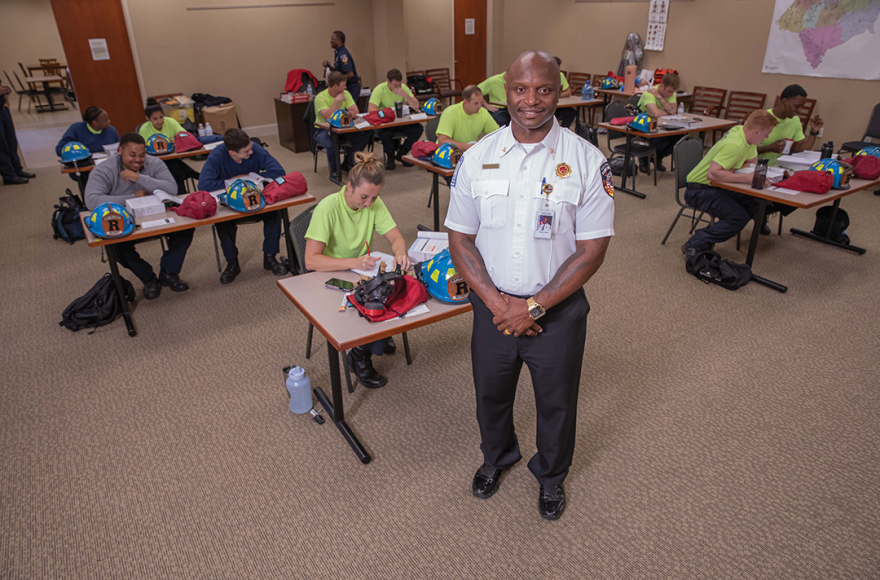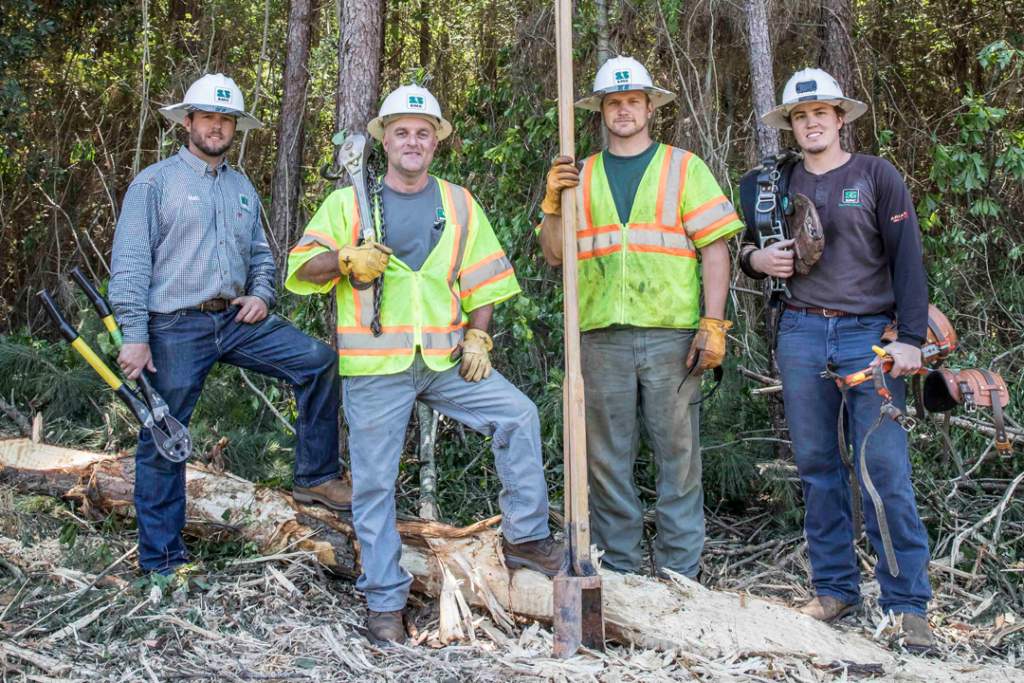Former University of Georgia running back Kregg Lumpkin traded in his helmet for a hose in what some considered a surprising career switch. The married father of four now spends his days training new recruits for Newton County Fire Services.
Kregg Lumpkin rushed for 1,700 yards and scored 17 total touchdowns across his injury-plagued four-year career as a running back at the University of Georgia and signed with the Green Bay Packers as an undrafted free agent in 2008. He went on to spend parts of three seasons in the NFL with the Tampa Bay Buccaneers, Seattle Seahawks and New York Giants.
Some might look at Lumpkin’s time on the gridiron—as a senior at Stephenson High School in Stone Mountain, he was rated as the No. 2 tailback recruit in the country behind future Heisman Trophy winner Reggie Bush—and assume that was his peak. However, Lumpkin believes his current role as trainer for Newton County Fire Services better suits his childhood goals.

“I would tell my mom and dad that I wanted to be a firefighter,” he said. “I loved watching the firetrucks riding big and loud. I wanted to be a part of that.”
Lumpkin joined the Clayton County Fire Department in 2016 and fulfilled his dream of becoming a firefighter. He later relocated to Newton County Fire Services and became a trainer in 2019. The leap from running back to firefighter was a natural transition for him.
“I would tell my mom and dad that I wanted to be a firefighter. I loved watching the firetrucks riding big and loud. I wanted to be a part of that.”
Kregg Lumpkin
“To me, in a lot of ways, football is similar to firefighting,” Lumpkin said. “We have to wear special gear, use equipment [and] we’re always doing training. We’re also very vocal in the community, whether it’s reading to kids in the schools or hosting community events.”
Like professional sports, firefighter training requires a high degree of physical aptitude. Upper-body strength is required to quickly climb extended ladders and help people out of burning buildings. Physical stamina is necessary to carry weighty hoses, a 30-pound self-contained breathing apparatus and other equipment necessary to do the job. Firefighters must also learn how to maneuver while wearing multi-layered, heavy protective clothing designed to withstand temperatures up to 1,200 degrees Fahrenheit. Mental preparation is equally as important as physical conditioning in first-responder training. Drills teach recruits how to think clearly, critically and quickly under extremely stressful conditions. Lumpkin’s workday includes a multitude of organizational tasks.

“I get in and check emails and make sure everything planned is still on track,” he said. “I open up the facility and make sure everyone has the documentation they need. Then I ride around and make sure that everyone is where they need to be that day.”
Lumpkin admits to being a stickler for punctuality and expects trainees to be on time for the day’s scheduled activities, which could be anything from fire truck driving simulation to putting out fires at the training facility’s two-story Class A burn building. Live fire training represents an opportunity to get hands-on firefighting experience within a controlled environment. However, since every fire call has its own unique challenges, Lumpkin invites Newton County residents to consider donating condemned houses or abandoned buildings to the fire department instead of demolishing them.
“A lot of training can’t be replicated to a certain extent,” he said. “If we get an acquired structure where someone wants to donate their property or house, we can make it more like a real house fire for more accurate hands-on training. It helps them learn real-world situations they’ll face on the job.”
This desire for real-time training also echoes the type of instruction Lumpkin experienced while playing professional football. He feels that his experiences there made him a better firefighter trainer.
“I have the mentality that the way you train is how you’re going to play,” Lumpkin said. “People don’t see football practices that happen Monday through Friday. They only see how you perform on game day. People don’t realize how much goes behind being prepared to show up and do your job well. There’s just so much that happens behind the scenes to show up at a fire and do the job well.”
Newton County Fire Services encourages people who meet the physical, educational and licensing requirements outlined on its website to apply for open firefighter positions. Lumpkin advises applicants to understand that emergency medical training is the first required step in becoming a firefighter in Newton County.
“That’s because the majority of calls we get, about 85 to 90%, are EMS calls—not fire calls,” he said. “Other fire departments do it differently because the requirements are different. Like in DeKalb County or in Atlanta, they have a large population and see a fire every day of the week. Smaller areas like ours don’t have as many. You have to be prepared to respond as passionately to EMS calls as you are about fire calls.”
Those interested in providing an acquired structure for firefighter training can contact Lumpkin at 678-625-5025. He will take care of the documents and permits required to legally burn the building for training purposes.
Click here to read more stories by Kari Apted.




